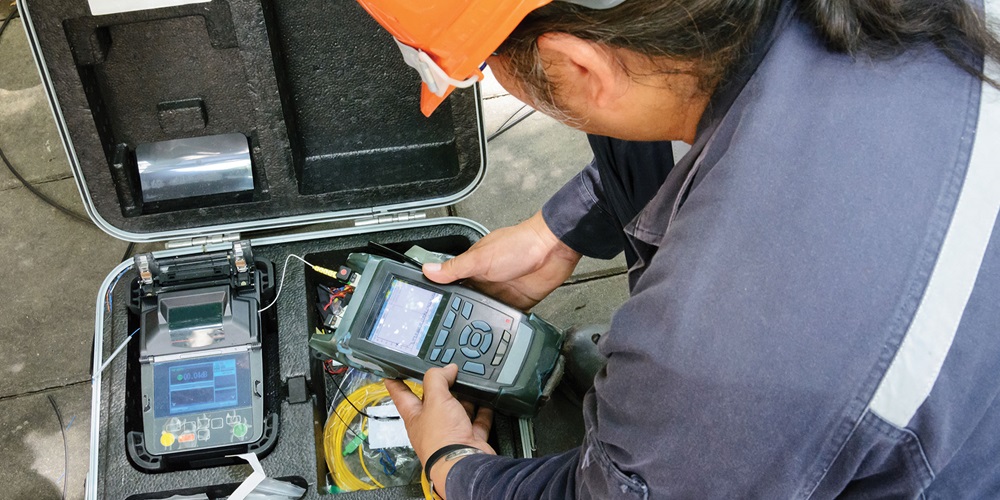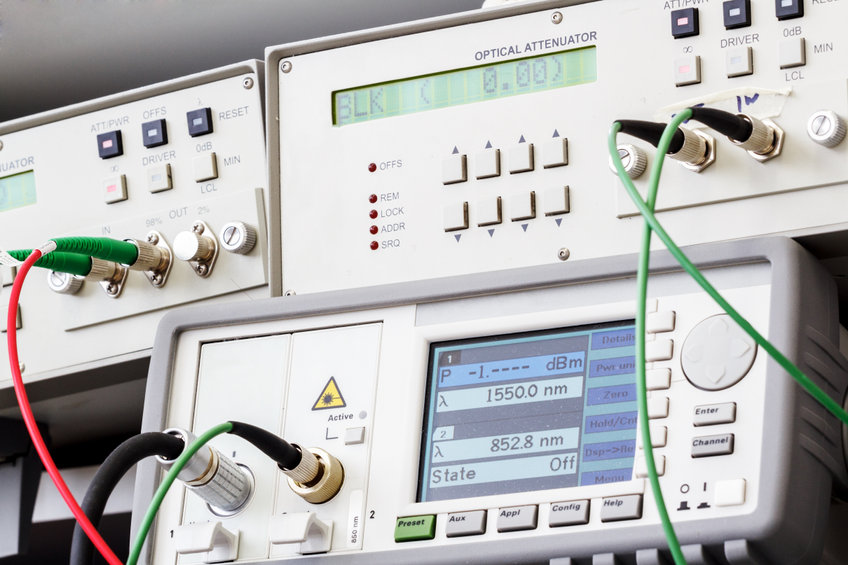The latest optical fibre testing equipment enhances troubleshooting and diagnostics in telecommunications.
The latest optical fibre testing equipment enhances troubleshooting and diagnostics in telecommunications.
Blog Article
Introducing the Trick Use Optical Fibre Evaluating for Effective Information Transmission
In the world of modern interaction, optical fiber screening becomes a vital method for enhancing information transmission. By using methodologies such as Optical Time Domain Name Reflectometry (OTDR) and insertion loss analyses, network drivers can properly determine and address issues that may compromise signal integrity. As the demand for faster and extra dependable connections continues to increase, the implications of these testing techniques extend beyond prompt fault detection, influencing lasting network efficiency. Understanding the complex applications of optical fiber screening welcomes a deeper expedition into its essential duty in forming the future of information interaction.

Relevance of Optical Fiber Testing
The importance of optical fiber testing can not be overemphasized, as it works as a vital component in making certain the dependability and efficiency of information transmission systems. In an age where high-speed interaction is vital, any shortages in fibre optics can bring about considerable information loss and decreased efficiency. As a result, rigorous screening procedures are vital to validate the stability and efficiency of optical cable televisions.
Checking permits for the recognition of issues such as micro-bends, macrobends, and splice losses that can hinder signal high quality. Moreover, it gives understandings right into the total depletion and data transfer abilities of the fibre, making certain that the network meets specific operational standards. Regular testing not just boosts system efficiency yet additionally extends the life expectancy of the facilities by identifying potential concerns before they escalate right into pricey failures.

Sorts Of Optical Fiber Tests
Numerous sorts of optical fiber tests are carried out to ensure the efficiency and reliability of fibre optic networks. These tests can be classified into a number of vital types, each offering a certain purpose in examining the integrity of the fibre.
First, Optical Time Domain Name Reflectometry (OTDR) is a popular examination that determines faults, entwines, and ports within the fiber. By sending pulses of light and analyzing the shown signals, specialists can determine issues along the fibre's length.
2nd, insertion loss examinations assess the amount of signal loss when light travel through connectors or splices, which is vital for maintaining network effectiveness.
Third, return loss examinations gauge the amount of light reflected back towards the source, supplying understandings into the quality of connections and possible resources of disturbance.
Additionally, continuity tests make sure that the fiber course is full, permitting technicians to verify that the fibre is intact with no breaks. optical fibre testing equipment.
Last but not least, visual fault locators use visible light to identify breaks or severe bends in the fiber, assisting in fast troubleshooting. Collectively, these tests form a comprehensive method to maintaining optimal performance in fibre optic networks.

Applications in Network Upkeep
In modern-day telecoms, efficient network maintenance relies greatly on optical fiber screening to determine and correct issues quickly. Routine testing makes sure that the network runs at optimum efficiency degrees, reducing downtime and boosting customer experience.
One of the primary applications of optical fiber screening in upkeep is the detection of faults, such as breaks, flexes, or inappropriate connections. Techniques like Optical Time Domain Name Reflectometry (OTDR) enable service technicians to locate these concerns precisely and analyze the top quality of the fibre web link. Furthermore, loss testing validates the stability of the optical path, making certain that signal attenuation remains within appropriate limits.
Regular maintenance screening also assists in safety nets, recognizing potential troubles before they rise into considerable failures. This aggressive approach can conserve organizations both time and monetary resources. Additionally, during upgrades or growths, optical fiber testing makes certain that brand-new installations incorporate seamlessly with existing facilities.
Enhancing Information Transmission Dependability
Reliable network upkeep via optical fibre screening not only addresses prompt issues but additionally visit this website plays a significant function in boosting information transmission reliability. By determining mistakes, gauging signal loss, and evaluating the general condition of fiber optic wires, screening guarantees that prospective troubles are fixed before they escalate into considerable disturbances.
Normal optical fibre testing, such as time-domain reflectometry (TDR) and optical time-domain reflectometry (OTDR), enables professionals to determine the exact locations of breaks, bends, or connector issues within the network. This proactive method not only reduces downtime however additionally maximizes the efficiency of information transmission by ensuring that the pathways for signals are clear and operating successfully.
Moreover, screening help in validating adherence to sector requirements and requirements, which is crucial for maintaining the integrity of data circulation. By making certain that each link fulfills needed thresholds for loss and quality, organizations can boost their self-confidence in check my site the dependability of their data networks.
Ultimately, purchasing thorough optical fiber screening not only enhances information transmission dependability however also supports the lasting functional effectiveness of communication frameworks.
Future Fads in Fibre Testing
Arising innovations are poised to revolutionize fiber testing, leading the way for improved effectiveness and precision in information transmission diagnostics (fibre testing equipment). As the demand for faster net and greater bandwidth proceeds to increase, the integration of innovative tools such as expert system (AI) and device learning (ML) is readied to transform typical fibre screening techniques. These modern technologies will certainly make it possible for predictive upkeep and automated fault discovery, considerably reducing downtime and improving network reliability
Furthermore, the fostering of Web of Things (IoT) gadgets will certainly assist in real-time monitoring of pop over to this web-site fibre networks, enabling immediate recognition of performance problems. This change towards positive monitoring will lessen disruptions and enhance information circulation.
Additionally, technologies in optical time-domain reflectometry (OTDR) and new testing criteria will certainly improve the accuracy of dimensions, guaranteeing that information honesty is maintained throughout the transmission procedure. The arrival of 5G technology likewise demands the development of much more advanced fiber screening strategies to support its high-speed requirements.
Final Thought
In final thought, optical fibre screening is necessary for keeping effective information transmission within interaction networks. By utilizing numerous screening strategies, such as OTDR and insertion loss tests, potential faults can be identified and corrected, consequently boosting signal quality and decreasing downtime. Regular testing not only ensures compliance with industry standards but also helps with proactive maintenance, ultimately adding to the long-term reliability and efficiency of fiber optic systems. The ongoing development of screening methods will even more reinforce these capabilities in the future.
Report this page